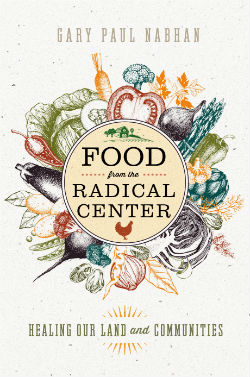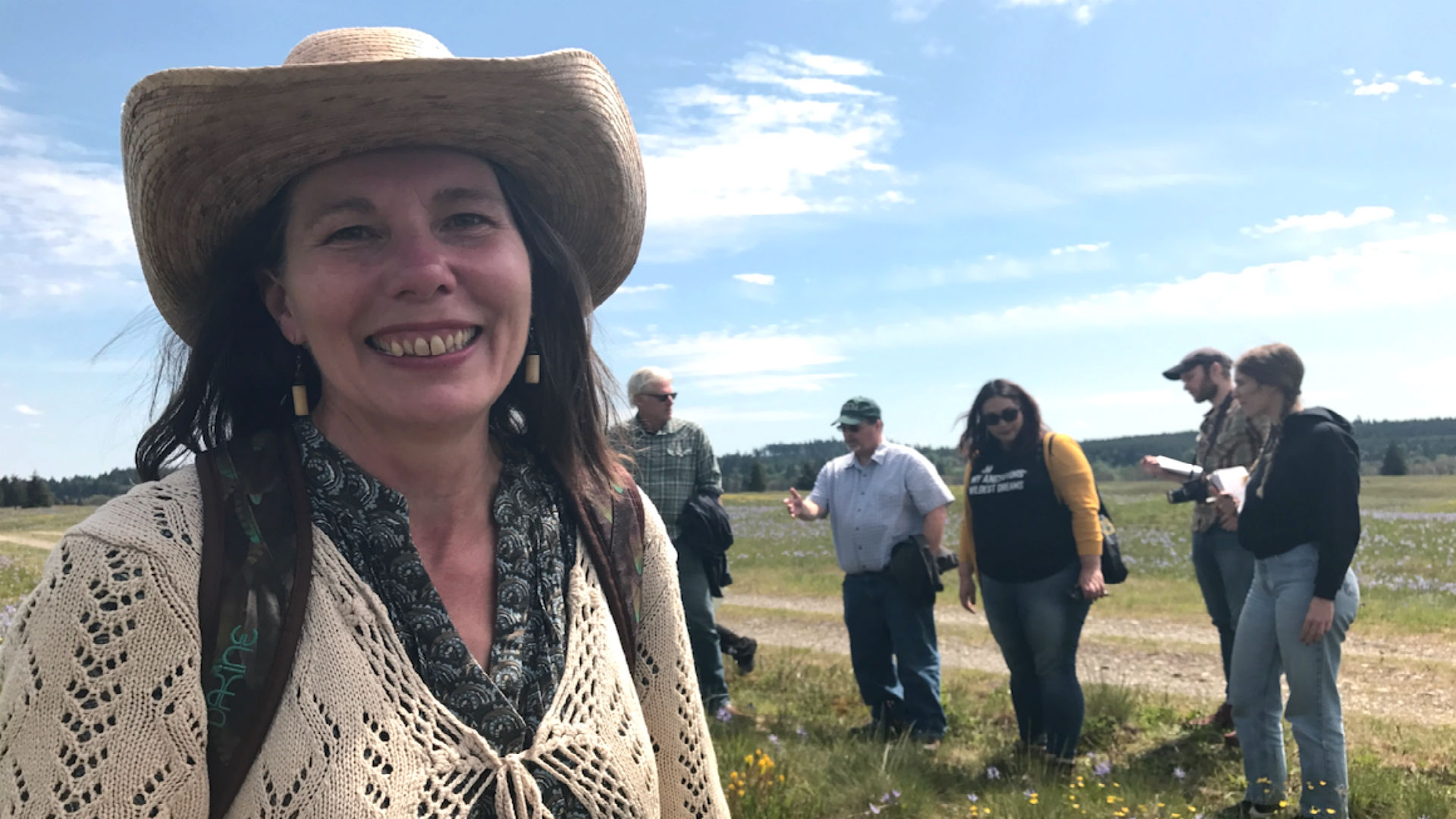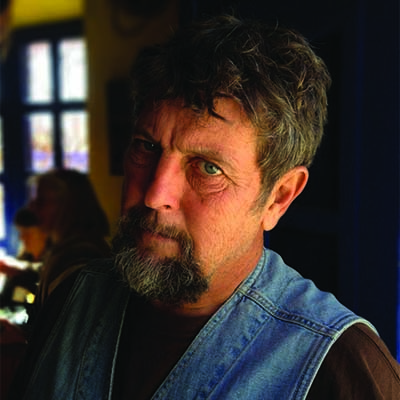In ethnobotanist and author Gary Paul Nabhan’s newest book, Food from the Radical Center: Healing Our Land and Communities (Island Press) he writes about communities engaged in the radical restoration work of connecting culture, food and place. His stories range from bees to bison, soil to sturgeon. In this excerpt, readers get to meet the women who practice “plant wifery,” helping to protect and restore species that have medicinal and cultural importance.
Have you ever been hiking and stopped in your tracks to gaze at wildflowers so vibrant and abundant that you couldn’t keep your eyes off of them? Did their delicate petals bring out the color in other lives found around you — the deer, the seed-eating sparrows, the other hikers making their way along the trail?
And was it just their beauty or also their scent — exuded for bees and butterflies — that told you that one day you too might taste this sweetness?
In late May 2017, ethnobotanist Joyce LeCompte offered me an opportunity to see such a sight and take a deep whiff of such a delectable fragrance. We hightailed it out of Seattle early one morning to rendezvous with others at the Glacial Heritage Reserve in the South Puget Sound area of western Washington.
There, the native plant in lavish bloom was the blue camas lily — Camassia quamash — the signature flower of wet prairie meadows in the Pacific Northwest. That spring, camas seemed to be blooming and blanketing the entire meadow in every direction we turned.
As far as our eyes could see, their six-petaled flowers added hues of pale lilac, violet blue and deep purple to the vivid greens and subtle tans of the open prairie.
If you happened to arrive at the reserve unfamiliar with the restoration project happening there, you could easily assume it was first and foremost about the restoration of beauty. After all, who could object to preserving the jaw-dropping, heart-pounding natural beauty of this world we live in?
The beauty of camas lilies was not ignored by previous generations of both residents in and travelers to western Washington. As early as the 1850s, camas lily bulbs were being dug up and shipped everywhere from the Atlantic seaboard to England to grace ornamental gardens.
But don’t get me wrong: This camas lily is not just another pretty face to be sent off to Some Place Else. Its ultimate value may lie in its ability to combat adult-onset diabetes among the indigenous peoples of the Pacific Northwest. The complex carbohydrates in camas roots slow the digestion and absorption of glucose, flattening blood sugar levels and potentially reducing stress on the pancreas.
In addition to being a traditional food of great significance to First Nations communities along the Pacific North Rim, it may be a key factor in their future health. More than 20 indigenous cultures in western Canada and the United States still tend, collect, clean and pit-roast its bulbs for special seasonal events. Many of these communities hope that camas can help keep their children free of diabetes.
Of course, some of these intertribal “root festivals” have been taking place for centuries and millennia. But now the bulbs are being dried and stored for families to eat year-round as one more means to deal with nutrition-related diseases.
Camas is just one of those “cultural keystone plants” that is both deeply intertwined with both indigenous health and the environmental health of the wet prairies. Thus the restoration of camas in wet prairies is linked to the restoration of human health for native communities who live in or near those landscapes.
And that is exactly why Joyce LeCompte of the University of Washington wrote an incubator grant to the Center for Creative Conservation: to bring together amazing women with diverse skills — Frederica Bowcutt (botany), Taylor Goforth (environmental communications), Valerie Segrest (native nutrition) and Sarah Hamman (restoration ecology). Their own goal was to provide technical as well as social support to leaders interested in camas that are emerging in Coastal Salish tribal communities.
The multicultural team set out to restore this landscape with the appreciation that indigenous knowledge, stewardship and use of these plants matter deeply to neighboring communities.
I doubt that it has escaped your notice, but historically, most “environmental remediation” projects were dominated by men — albeit well-intended men — who inadvertently practiced a top-down management style that echoed the military as a whole and the Army Corps of Engineers in particular.
Under the auspices of “improving the environment” to control floods and stream flow, the Army Corps drained marshes and wet meadows while planting shrubs for game birds and to stabilize soil. That’s exactly what plants like camas lilies do not need.
Few of these environmental engineers were even aware that local women were continuing to take their families out to harvest camas in places like the South Sound Prairies. As shrubs and Douglas firs moved in, camas lilies began to fade away, and harvesting became less frequent.
To reverse historic declines in camas and their traditional uses, Joyce and the other women who cohosted me have formed a multicultural “community of practice” for the edible plants and healing herbs of the South Sound Prairie.
I was heartened to see that these restoration and recovery efforts now involve dozens of indigenous harvesters, healers and herbalists as well as land managers, botanists, wildlife biologists, fire ecologists, nutritional scientists and ethnobotanical educators. They exemplify a trend that even the higher-ups in the U.S. Forest Services now embrace: that diverse membership in scientific communities fosters innovation and problem-solving more effectively than communities with a narrow range of knowledge, skills and experience.
In fact, many of the practitioners are women with a set of technical and experiential skills that ethnobotanist Kay Fowler calls “plant wifery.” Elsewhere in the Pacific Northwest, ethnobotanist Madrona Murphy might be considered one of those “midwives.” As she herself has documented, “Tribes cultivated [camas] in large gardens, subdivided into family-owned plots passed down through the generations. These were fertilized with seaweed, cleared of weeds and stones, and burned to control brush and grass.”
Building on these ancient practices, the women in Joyce’s entourage have initiated what they call “the Camas Prairie Cultural Ecosystems Incubator.” They are like traditional midwives who use plants to help “bring out of the incubator” and into full light fresh ways of engaging with other people and with the land.
Excerpted from Food from the Radical Center by Gary Paul Nabhan. Copyright © 2018 by the author. Reproduced by permission of Island Press, Washington, D.C.


